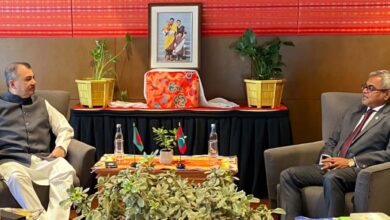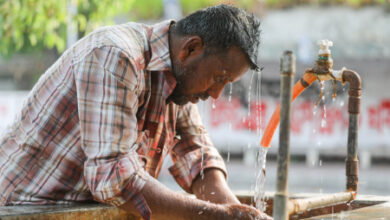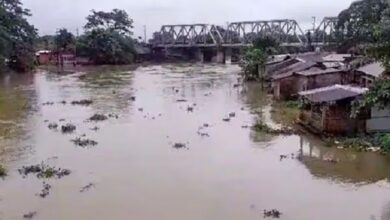Protecting one of the most biodiverse ecosystems in the world

Datem del Marañon, located in northern Peru, is home to one of the largest and most biodiverse peatlands not only in Peru, but in the entire world. Spanning more than 3.8 million hectares, this remote province is home to a diverse ecosystem with more than 261 species of birds, unique marine life, and aguaje, one of the most abundant palm trees in South America.
For hundreds of years, the Amazonian people have understood that to live in kinship with nature, they must listen to it with respect and admiration. Climate change has caused profound impacts on the region, with frequent droughts, flooding, heatwaves, and changes in primary productivity, affecting indigenous people and their native land.
The Datem del Marañon project (hereafter Project) is currently being implemented by Profonanpe, the Environmental Fund of Peru, a GCF direct access entity, and the first organisation approved for funding by the GCF Board in 2015. This USD 9.1 million Project helps indigenous communities in this northern Peruvian province manage their wetland resources in ways that avoids deforestation and the large-scale release of greenhouse gases stored in local peatlands.
While peatlands cover only three to five per cent of the Earth’s surface, they are key in addressing climate change, estimating to hold more than 39 per cent of the planet’s carbon stocks.
Indigenous engagement and local support are core values of the project and necessary in mitigating the effects of climate change in the region. In Musa Karusha, a native community in the Datem del Marañon province, fishing is considered a traditional and ancestral communal activity, a sustainable means of living, and an essential protein of the native diet.
Gunter Yandari, President of the Association of Katinbaschi Artisanal Fishermen, leads the commercialisation of artisanal fresh fish, which requires ice to be frozen and transported to other parts of the region. Unpredictable weather, a lack of cooling facilities, and expensive transportation costs causes him to loose up to 30 per cent of his hard-earned production. In response to this, the Project supported the installation of 120 solar panels to power an ice production plant.
To reduce the effects of greenhouse gasses, ice is now being manufactured using solar energy, and the water used for ice is purified with a carbon filter. With 500 kilograms of ice produced every eight hours, families can preserve up to 500 kilograms of fish and then sell the ice produced. The fish are stored in isothermal boxes to keep the fish fresh while being transported by boat.
Thanks to this investment, Gunter and his community have increased their earnings without overexploiting their lakes, producing 133,400 kilos of ice and selling 123,000 kilos of fish valued at USD 17,000, to date.
The project also contributes to workshops focusing on the nutritional information of the fish, sustainable processes, and best practices. The training allows Gunter and other fisherman to better compete in the local market while complementing their traditional knowledge and conservation practices.

In the native community of Puerto Díaz, the Project is enhancing the climate resilience and livelihoods of indigenous people by investing in sustainable methods of harvesting the aguaje palm tree.
The aguaje is home to a unique and complex fauna, most of its mammals and birds feed directly on their fruits and the water released by the roots transports nutrients to water bodies and fish. A single species plays a fundamental role in the structure of almost 4 million hectares of Amazon peatlands.
Segundo Chanchari, an aguaje palm tree escalation technician now uses safe, and internationally compliant climbing equipment to collect the fruit using a zero-waste approach. The technique allows Segundo and his community to harvest between 20 and 30 aguaje palm trees per day.
Segundo recounts that his ancestors used to cut down around 50 to 100 trees per day. However, now the project is directly helping local communities preserve the precious aguaje palm tree and its numerous benefits including removing carbon from the atmosphere and storing it in swamp soil. In helping to regulate the planet’s climate and to avoid catastrophe, these wetlands must be conserved and protected.
The sustainable harvesting of aguaje has led to a circular and economically viable bio-business as the oil is sold globally in food ingredients, hair and skin products. In the native community of Chapis, Apuapisem, an Awajún association has received an international organic certification to produce aguaje oils resulting in 385 kilograms of oil sold in 2022, earning the community more than USD 20,000.
The Project funding continues to support government departments, indigenous people, and community-based organisations in land-use planning, management of the region’s wetlands, and commercial bio-businesses.




